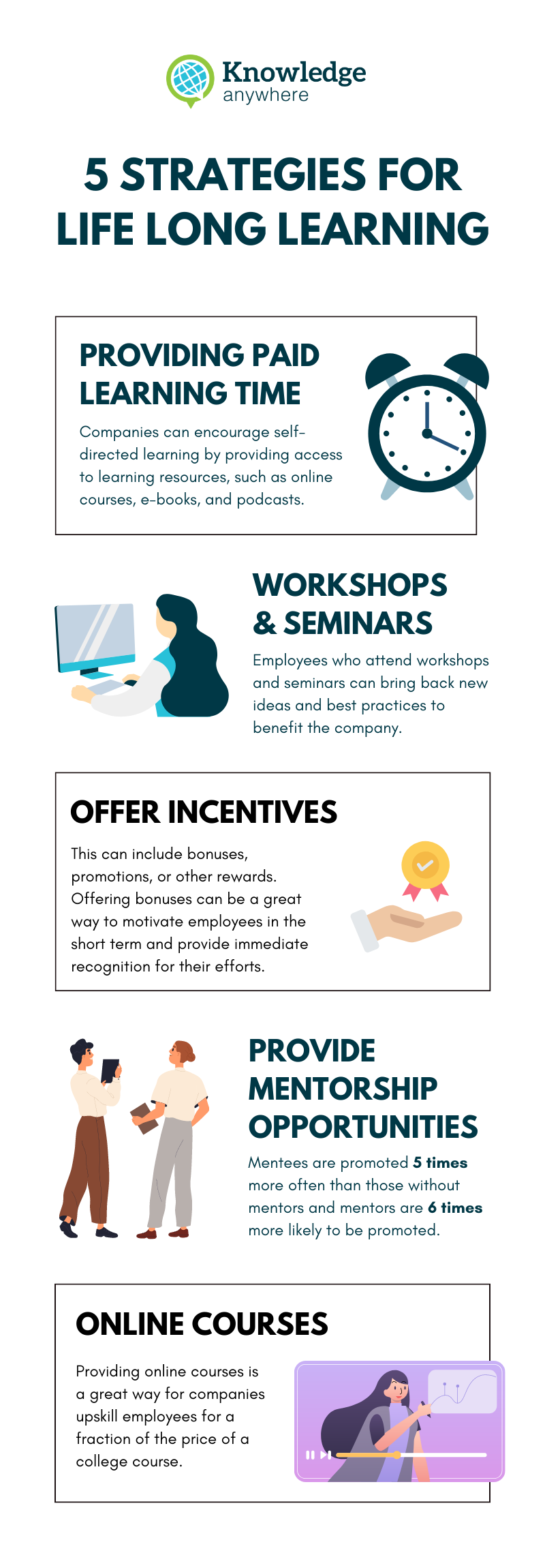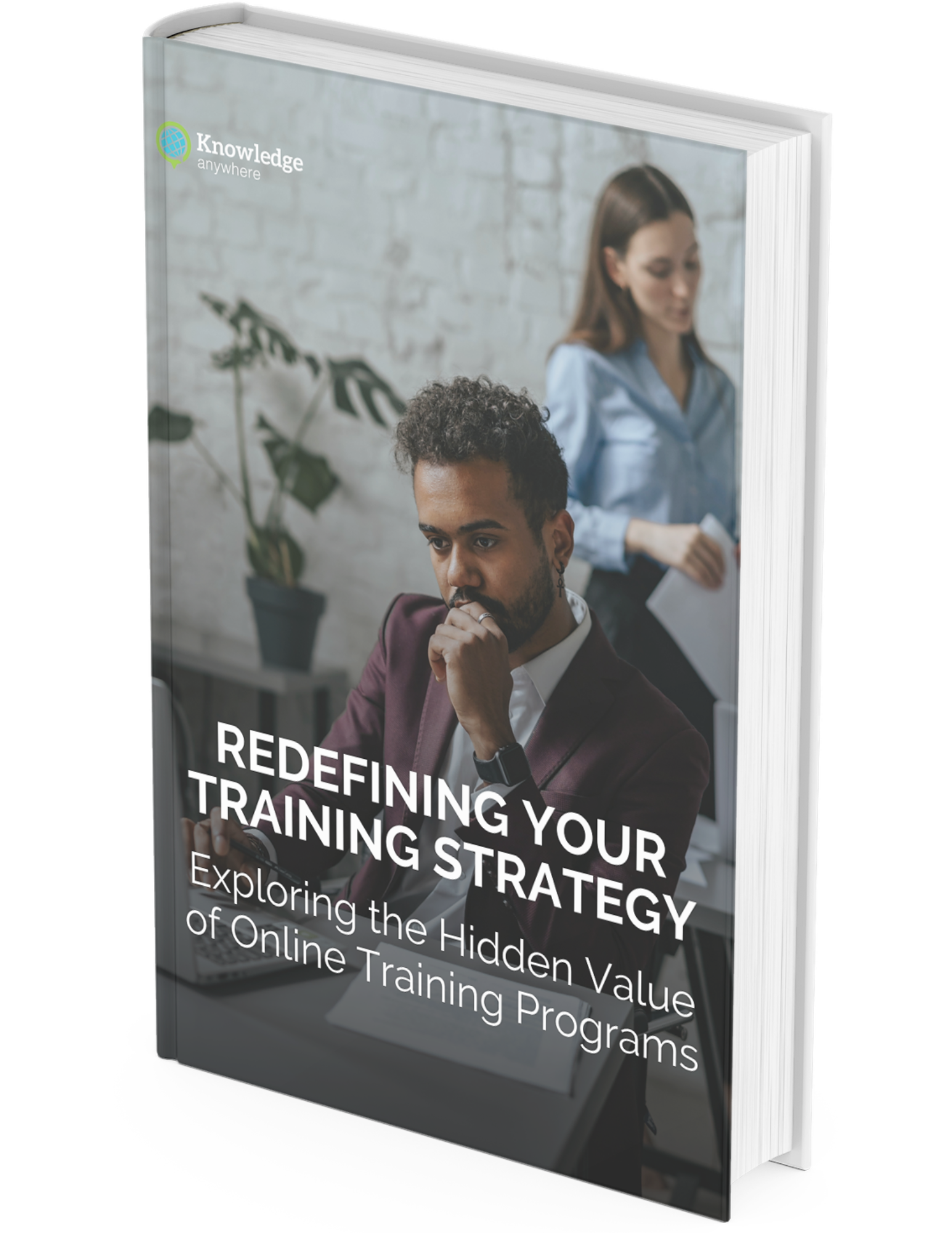Lifelong learning and continued education are critical for both individuals and organizations. For individuals, ongoing education and learning can help to enhance their skills, stay up to date with industry trends, and improve their chances of career growth and advancement. It can also help them adapt to changing job requirements and technologies and increase their employability.
90% of executives believe that building the organization of the future requires a culture of continuous learning, and 86% of millennials (who now make up the largest generation in the workforce) say that career development is important to them.
Deloitte survey
For organizations, investing in the education and development of their employees can lead to a more knowledgeable and skilled workforce, improved productivity, and increased innovation. Employees who are given opportunities for lifelong learning and continued education are more likely to feel valued and engaged, which can lead to higher job satisfaction and employee retention.
Moreover, in today's rapidly changing world, businesses that do not prioritize lifelong learning and continued education risk falling behind their competitors. Therefore, it is essential for individuals and organizations to prioritize lifelong learning and continued education to stay competitive and relevant in their industries.
There are many strategies employers can utilize to guarantee lifelong learning. Here are a few:
Provide Mentorship Opportunities
Pairing employees with mentors can be a great way to facilitate learning and development. Mentors can help employees learn new skills, provide feedback and guidance, and help them develop professionally. There are formal mentorship programs that pair employees with mentors who have expertise and experience in the same or related fields. These programs can include structured meetings, workshops, and other resources to support the mentor-mentee relationship. Informal mentorship can be facilitated through networking events, company-wide communication tools, or other channels that promote interaction and collaboration. Companies can offer reverse mentorship opportunities, where junior or newer employees are paired with senior or more experienced employees to provide guidance and insights on topics such as new technologies, workplace culture, and emerging trends.
Here are a few statistics about how mentorship can improve a workforce:
- Mentees are promoted 5 times more often than those without mentors (Source)
- And mentors themselves are 6 times more likely to be promoted (Source)
- 89% of those with mentors believe their colleagues value their work, compared with 75% who do not have mentors (Source)
- 87% of mentors and mentees feel empowered by their mentoring relationships and have developed greater confidence (Source)
Industry Workshops and Seminars
Encouraging employees to attend workshops and seminars can also be a way for employees to stay up to date on the latest trends and developments in their field. Employees who attend workshops and seminars can bring back new ideas and best practices that can benefit the company. This can lead to increased innovation and productivity.
Providing Paid Learning Time
Companies can set aside regular times for learning, such as monthly or quarterly sessions. They can also set aside time for employees to work on self-directed learning during their workday. Companies can encourage employees to engage in self-directed learning by providing access to learning resources, such as online courses, e-books, and podcasts, and by promoting the benefits of continuous learning.
Offer Incentives
Companies can offer incentives to employees who participate in training programs or learning and development opportunities. This can include bonuses, promotions, or other rewards. Offering bonuses can be a great way to motivate employees in the short term and provide immediate recognition for their efforts. It is a tangible way to show employees that their learning efforts are valued and appreciated. Career promotion opportunities, on the other hand, can provide longer-term benefits for employees and the company.
We know how your business benefits from having skilled and trained employees – but if Learners fail to see the benefits for them, your beautiful training platform will go unused. Convince them to engage by providing and communicating tangible ways their training and upskilling can result in money in their bank account.
Here are a few different incentives companies can offer Learners to increase training engagement:
- Provide an Educational Fund as part of a total compensation package
- Set up employee recognition programs
- Utilize and value Badges and Certificates
- Track and reward soft skills
- Tie promotions to performance … and training
- Make training expectations clear during Onboarding
Read more about the eLearning to Earning; 6 Ways to Turn Training and Upskilling into Employee Compensation here.
Robust, Relevant Online Courses
Providing access to online courses is a great way for companies to offer many of the same skills that an employee would learn in a college setting for a fraction of the price just without the degree. There are many great providers such as Open Sesame, LinkedIn Learning, or Immersive 360 which offer VR courses. These providers offer a wide range of courses and programs on various topics, including leadership, project management, coding, and data analysis. Oftentimes, employees can also earn certifications through many of these online courses as well. Having a platform like an LMS to host online courses as it allows companies to create learning paths and career development plans that identify the skills and knowledge needed to advance in their careers, and then offer online courses and programs that align with those goals.
If you're looking for training help to better equip your team for lifelong learning, schedule a consultation with one of Knowledge Anywhere's amazing eLearning experts. We have over 25 years of experience and can help you create a custom training program that matches the needs of your organization.

Similar Posts
Learn how you put education at the center of your organization with these great articles and resources.


 Redefining Your Training Strategy: Exploring the Hidden Value of Online Training ProgramsIf you want a consistent training process, more productive and efficient employees, and increased company ROI, it's time to learn the secrets of effective training with our FREE ebook! No tech jargon, just clear steps to transform your strategy. Download now!
Redefining Your Training Strategy: Exploring the Hidden Value of Online Training ProgramsIf you want a consistent training process, more productive and efficient employees, and increased company ROI, it's time to learn the secrets of effective training with our FREE ebook! No tech jargon, just clear steps to transform your strategy. Download now!

